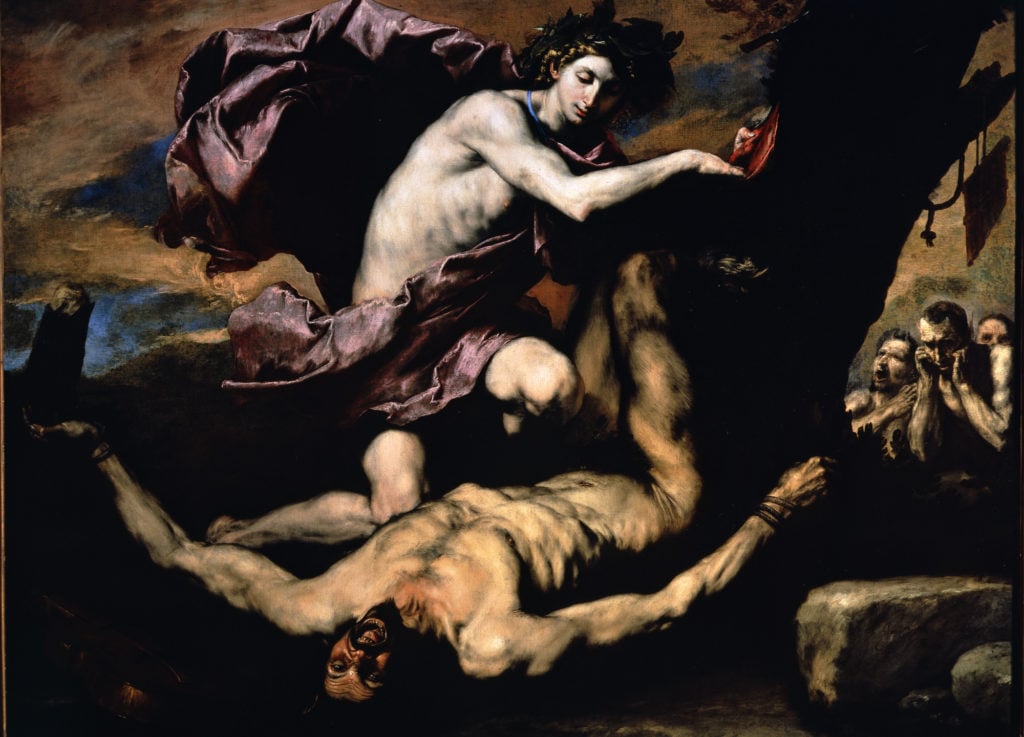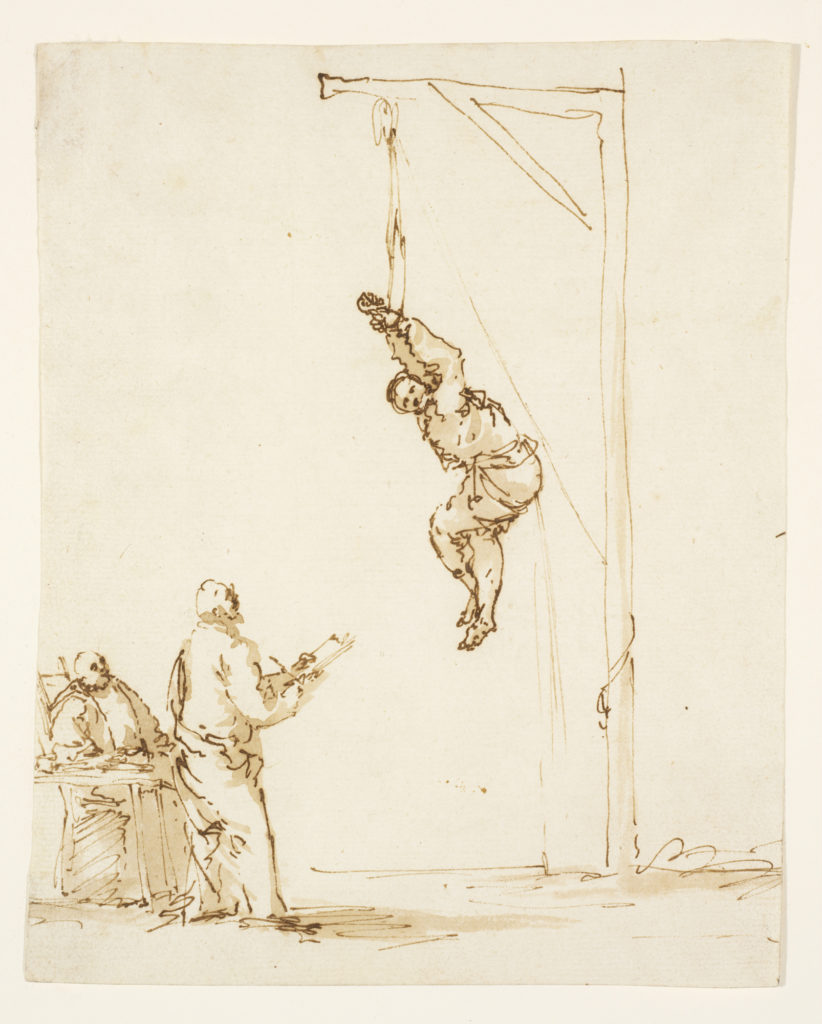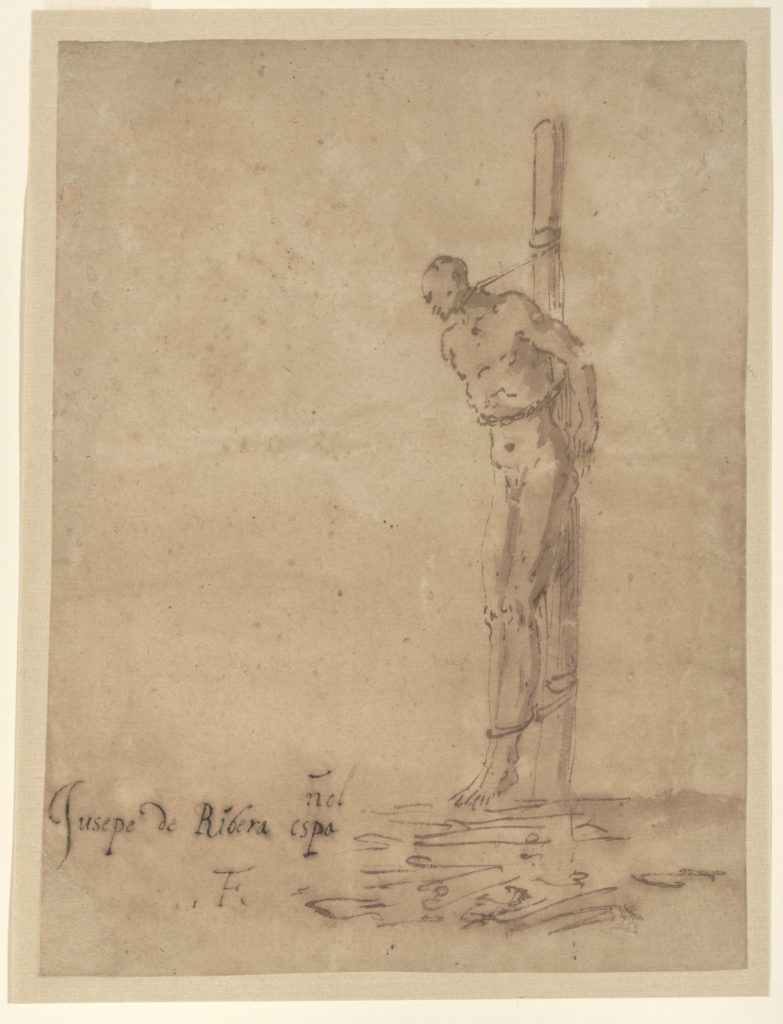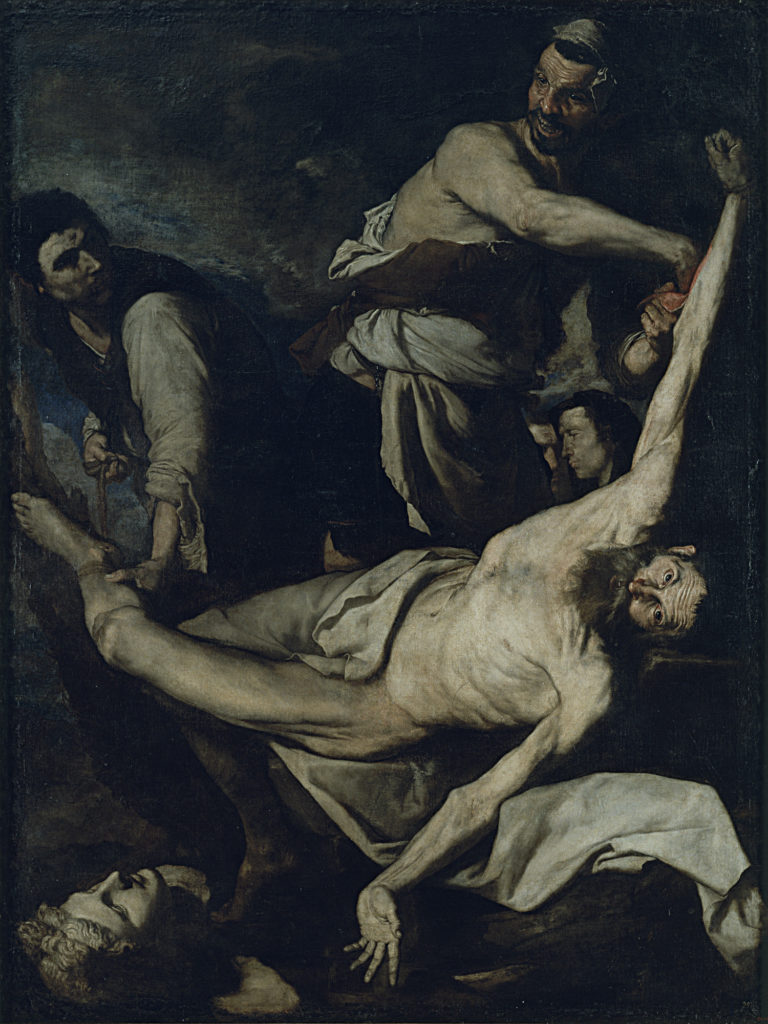Art & Exhibitions
A New London Show Will Reveal the Painter Jusepe de Ribera as a Master of Violence. Was He Also a Murderer?
Rumors have long swirled around the Baroque artist and the mysterious death of his rival, Domenichino.

Rumors have long swirled around the Baroque artist and the mysterious death of his rival, Domenichino.

Naples was a dangerous place to be in the 17th century, and it was no different for the brilliant artists who toiled in the Mediterranean city—in fact, they weren’t even safe from their illustrious peers. When Domenichino died in mysterious circumstances while painting frescoes in the Duomo di San Gennaro, the grand cathedral at the center of Naples, Jusepe de Ribera was suspected of murdering his arch-rival.
Edward Payne, who is the co-curator of the exhibition “Ribera: Art of Violence,” which opens at the Dulwich Picture Gallery in South London this fall, says there is no hard evidence that Ribera murdered Domenichino. But there were rumors, and Ribera—who was a member of the notorious art-gang, the Cabal of Naples—he had a motive. The frescoes in the Treasury Chapel that Domenichino was entrusted were a prestigious commission, and the Neapolitan art scene was cut-throat competitive. Guido Reni, who was tapped for job when his fellow Bolognese artist died, fled after his assistant was beaten up. (There were rumors Ribera and others also conspired to poison the painter.) Although two other artists were briefly involved in the frescos, it was the Spanish-born Ribera who finally completed the commission in 1641, depicting the patron saint of Naples emerging unscathed from a fire.
The exhibition in London of Ribera’s violent paintings, prints, and drawings will be the first major show of his work in the UK. Payne, the chief curator of the Auckland Project in the North of England, and co-curator Xavier Bray, the director of London’s Wallace Collection (and former chief curator at Dulwich), have been working on the show for the past seven years. Among the 45 works they have secured from major European and North American institutions are three versions of the martyrdom of Saint Bartholomew that span Ribera’s career.

Jusepe de Ribera, Inquisition Scene (after 1635). Photo by Erik Gould, courtesy of the Museum of Art, Rhode Island School of Design, Providence.
These and other paintings reveal his realistic treatment of shocking scenes. (Saint Bartholomew was flayed alive, for example.) Ribera was a prolific draughtsman, but he drew principally for himself and not as preparatory sketches for his paintings, Payne says. His drawings record scenes of execution and torture that he would have witnessed. Works on paper in “Ribera: Art of Violence” include Man Tied to a Tree (c. mid-1620s) from the Musée du Louvre, and scenes of Inquisitors torturing suspected heretics with the strappado, a method of punishment that involved securing a subject hands behind their back and hanging them by the wrists until their shoulders pop out of joint. From the profusion of the drawings, one might believe Ribera relished these scenes.

Jusepe de Ribera, Man Bound to a Stake (first half of the 1640s). Photo copyright Fine Arts Museum of San Francisco.
“There has been a tendency in the biographical writings to create a myth of ‘Ribera the violent man,’” Payne cautions, adding that the artist’s life story has been sensationalized since the 17th century. Some suspected him of poisoning poor Domenichino. “We know Caravaggio killed a man, and Agostino Tassi did rape Artemisia Gentileschi, but Ribera has no criminal evidence,” Payne says. “Because he chose violent themes, we should not assume he was a violent personality.”

Jusepe de Ribera, Martyrdom of Saint Bartholomew (1644). Photo: Mnac, Calveras/Mérida/Sagristà, copyright Museu Nacional d’Art de Catalunya, Barcelona, 2018.
The single-venue show will be topical in London, which has seen a recent escalation in gang violence. There have been fatal stabbings in Camberwell and Peckham, two neighborhoods that are near Dulwich. Payne says that the violence in Ribera’s art is “not gratuitous.” His realism appeared modern to 19th-century French artists, including Manet. If Ribera was not the violent competitor in life that rumor portrays, the theme of violent rivalry is a central theme of his art. Ribera’s 1637 painting of the flaying of a satyr who rashly challenged the god, which is being lent by the Museo Nazionale di Capodimonte in Naples, provides the finale of the show. “The theme of Apollo and Marsyas is about a musical competition,” Payne says. “It is the tour de force of his career.”
“Ribera: Art of Violence,” September 26 through January 27, 2019, Dulwich Picture Gallery, London.